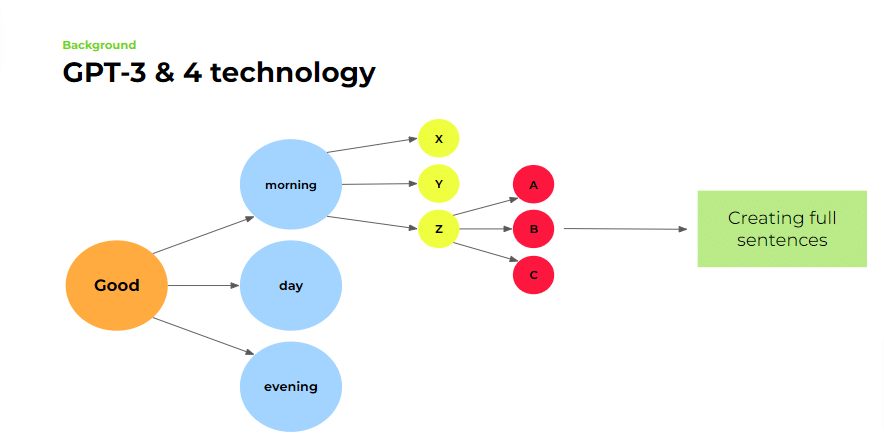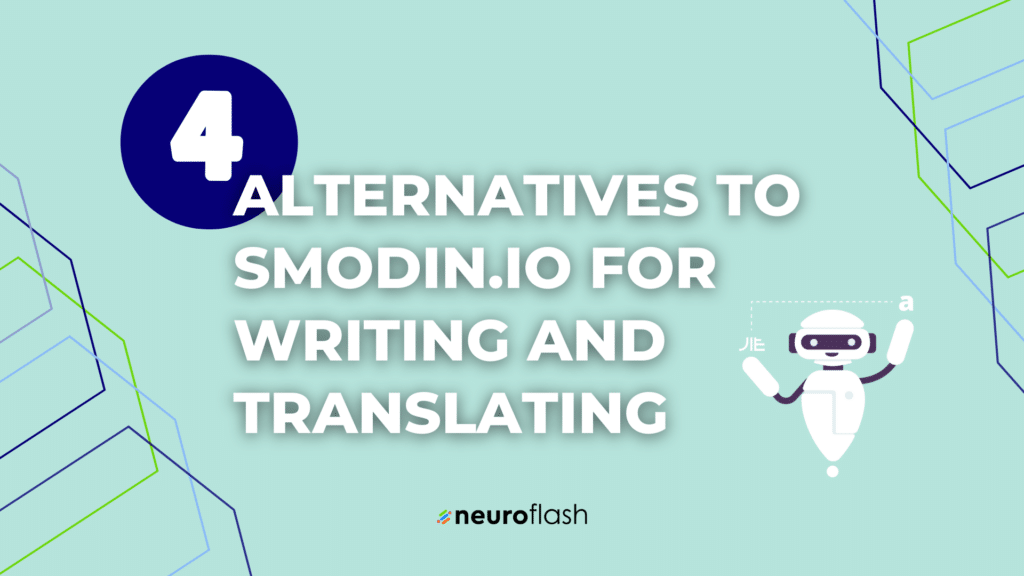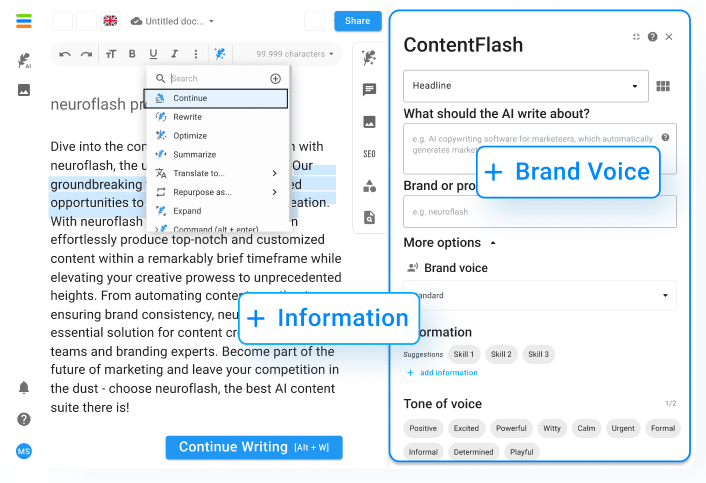Generative Pre-Trained Transformer 3 (GPT-3) and Generative Pre-Trained Transformer 4 (GPT-4) are two of the latest technologies in artificial intelligence (AI). GPT-3 was released in May 2020, and its successor, GPT-4, is expected to be launched in early 2023. With the ever-increasing popularity of ChatGPT, which was developed by the same company as GPT-3, the question now arises as to what extent OpenAI plans to release the GPT-4 language model. We’ll give you a detailed look at what GPT-4 vs. GPT-3 might look like.
What are the GPT Models?

A Generative Pre-Trained Transformer (GPT) is a sophisticated neural network used to train large language models. The network uses large amounts of publicly available Internet text to simulate human communication.
The GPT models GPT-4 and GPT-3 are both such Language Models which are used to generate text. GPT-4 is a further development of GPT-3, which contains more inputs and has a larger data set volume. Both models use machine learning to generate text in natural language.
The Evolution of GPT: A Journey from GPT-1 to GPT-3
The evolution of GPT (Generative Pre-trained Transformer) models reflects a journey of advancements in natural language understanding and generation. Developed by OpenAI, these models have progressed through multiple iterations, from GPT-1 to GPT-4. Here, we outline the main differences and improvements in each version:
GPT-1
- Introduced in 2018
- Based on the Transformer architecture from the paper “Attention is All You Need”
- 117 million parameters
- Unsupervised pre-training followed by supervised fine-tuning
- Demonstrated strong results in a range of natural language processing tasks
GPT-2
- Launched in 2019
- 1.5 billion parameters
- Improved unsupervised pre-training with a larger dataset (WebText) and longer sequences
- Better performance on various NLP benchmarks
- Generated more coherent and contextually relevant text
- Controversy surrounding its release due to concerns about potential misuse (e.g., generating fake news)
Improvements from GPT-1 to GPT-2:
- Increased number of parameters, leading to better performance
- More advanced training methodology
- Improved performance on NLP benchmarks and text generation
GPT-3

- Released in 2020
- 175 billion parameters
- Trained on a much larger dataset, including books, articles, and websites
- Demonstrated near-human performance on several NLP tasks, such as translation, summarization, and question-answering
- Enabled zero-shot and few-shot learning
- Introduced the OpenAI API for GPT-3, allowing developers to build applications
Improvements from GPT-2 to GPT-3:
- Significantly increased number of parameters
- Improved performance on a wide range of NLP tasks
- Ability to learn with minimal training data (zero-shot and few-shot learning)
- API for developers to build applications
In summary, the evolution of GPT models has been marked by significant improvements in language understanding and generation capabilities. The models have grown in size (number of parameters) and have been trained on increasingly large and diverse datasets. This has led to enhanced performance on a wide array of NLP tasks, including translation, summarization, and question-answering.
GPT-4 vs. GPT-3: How is the performance measured in comparison?

To measure the performance of GPT-4 compared to GPT-3, different approaches are used. The first approach is to measure precision and accuracy. This involves comparing the results of one task with the results of other tasks to determine which are better. This approach can be used to determine how well GPT-4 vs. GPT-3 performs on a given task.
Another approach is to measure the ability to deal with new language. GPT-4 and GPT-3 are tested for their ability to understand and process new words and sentences (natural language processing). This is especially important for use cases where the goal is to identify and respond to new contexts.
The last approach concerns the speed of the model. In this case, you test GPT-4 and GPT-3 to see how quickly they can respond to requests. The faster the model responds, the more efficient it can be. This is a critical factor for many use cases in AI or other areas of computer technology.
Overall, these approaches provide a clear picture of the performance of GPT-4 vs. GPT-3. Using their different methods, researchers can identify which model is better suited for specific use cases in AI or other technologies. Thus, measuring the performance of GPT-4 compared to GPT-3 provides an essential basis for developing new technologies in the future.
GPT-4 vs GPT-3: What has changed?

As of now, GPT-4 has just been released, so it is not possible to go into a detailed technological comparison of GPT-4 vs GPT-3 yet. However, in terms of performance or capabilities advancements can already be seen. Here are the key changes that we can see in GPT-4 vs GPT-3:
Feature
Model Size
Training Data
Multilingual Support
Few-Shot Learning
Contextual Understanding
Accuracy
Information
Release & Accessibility
GPT-3
175 billion parameters
Trained on a diverse range of sources including books, articles, and websites
Supports over 40 different languages
Can generate coherent text with just a few examples
Can understand context and generate text that is relevant to the given context
Has shown impressive accuracy in generating text
Limited knowledge of events after 2021
November 2022
Variations available on the OpenAI Playground and available for commercial use via OpenAI pricing plans
GPT-4
ca. 1 trillion parameters
Trained on more diverse and larger datasets including images as well as text
Outperforms GPT-3 in 24 tested languages
Better few-shot learning capabilities plus visual input
Can understand longer context and generate better relevant text
Improved accuracy especially for high complexity
Limited knowledge of events after 2021
March 2023
Available via ChatGPT Plus subscription and waitlist open access to GPT-4 via OpenAI API
GPT-4 vs. GPT-3: Which model is better now?
Both models have their advantages and disadvantages in comparison with each other. First of all, it should be noted that GTP-3 can solve basic problems faster than GTP-4 because of its smaller parameter set and smaller number of records. Therefore, it often makes more sense to use GTP-3 instead of GTP-4 for basic tasks. However, for more demanding tasks you need a higher parameter set and more data sets – this is the advantage of GTP-4: it provides greater accuracy for difficult tasks thanks to its larger parameter set and data set volume.
For this reason, there is no general consensus on which method is better: for simple tasks, it may be useful to work with GTP-3; however, for more challenging problems, it is often recommended to use GTP-4 – especially when the accuracy of the results is a priority. Both models have their place in the world of machine learning – but ultimately, the key is always your personal preference in choosing the right approach for your specific use case!
GPT-4 vs. GPT-3: Artificial intelligence applications with the two systems

Overall, both AI systems enable impressive results in various artificial intelligence application areas. While GPT-4 is more powerful than GPT-3, it does not offer the same scalability or flexibility. Depending on the specific requirements of an organization, the best AI application should be chosen to achieve the best possible performance. Possible applications may include:
- Content creation: From 18th century poems to modern blog articles, GPT models can be fed any type of prompt and begin producing coherent and human-like text results.
- Text summarization or rewriting: Being able to generate fluent, human-like text, GPT can reinterpret any type of text document and create an intuitive summary from it. This is useful for gaining insights and analyzing, or reformulating.
- Answering questions: One of the main competences of the GPT software is its ability to understand language, including questions. Moreover, it can provide precise answers or detailed explanations depending on the user’s needs. This means that customer service and technical support can be significantly improved through GPT-supported solutions.
- AI Chat: Chatbot technology developed with GPT software can become incredibly intelligent, as seen with ChatGPT. This can create virtual assistants with machine learning that can help professionals complete their tasks regardless of the industry.
neuroflash as an example for GPT-3 and GPT-4 applications
neuroflash combines both GPT-3 and GPT-4 in many applications like content creation, AI chat, answering questions and much more. Thereby, neuroflash enables its users to have various texts and documents created on the basis of a short briefing. With over 100 different text types, the neuroflash AI can generate texts for any purpose. For example, if you want to create a product description with neuroflash, you only have to briefly describe your product to the AI and the generator does the rest:
neuroflash can also help with more creative tasks. If you want to write a story, for example, this is also possible:
Finally, you can also use neuroflash as a ChatGPT alternative and communicate directly with our AI. We show you in a short video how it works:
Moreover, neuroflash can be used to generate more than just texts. Other functions, such as an SEO analysis for written texts and an AI image generator offer additional added value.
Would you also like to benefit from the power of GPT-4 plus additional functions? Then try neuroflash for yourself and create a free account!
Conclusion: Which system is more worthwhile for AI applications?
The comparison between GPT-4 and GPT-3 has shown that both systems have their strengths and weaknesses. Both offer impressive computing power, but those who really want to benefit from AI applications should weigh their requirements thoroughly. Best take a look at our other blogposts for more information and to make sure you’re making the right choice!
























